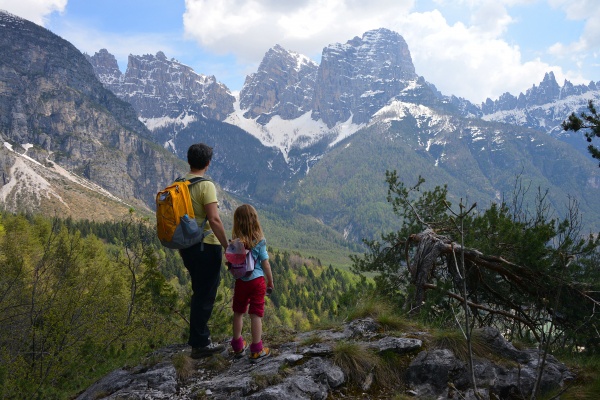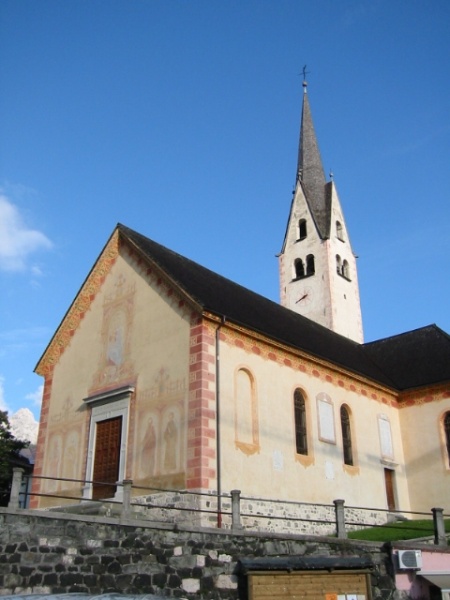This itinerary is almost entirely by road (except for the short uphill part along the “strada de I Sass”), which leads to a visit of some of Val di Zoldo’s most important artistic works. There is a wonderful view of the Civetta-Moiazza and the mountains which surround the lower part of the valley.
From the centre of Forno climb up the stairs which lead to the little church of S.Francesco leaning against the Casa dei Ciòri and the Capitanio palace, centre of the museum ‘Museo del Ferro e del Chiodo’. From here Ria da Canp climbs up to the right, leading to Campo, firstly steep and narrow among the houses, then flat and open onto Forno and Baron; once you have overcome the characteristic roofed wash-house, the road becomes steeper and reaches Campo’s first houses. Turn left here, cross the small village of Sorogno and climb up “la strada de i Sass” up to Pieve.
The main square is dominated by the church of San Floriano, a great monument of the XVth century, with an elegant and bold bell tower; also noteworthy is the house of Pra Agnoli and other elegant buildings lined up on both sides. From the square in front of the church you can look over the mountains and the lower Val di Zoldo: Rite, Castelìn, Bosconero-Serra, Mezzodì, San Sebastiano-Tamer, Moiazza and Civetta; only Mount Pelmo cannot be seen since it is covered by Mount Punta. Near the church the Via Crucis (Way of the Cross) descends towards the Gothic church of Madonna Addolorata and to the impressive cemetery where Besarel is buried, the most illustrious of Zoldo’s artists. After a short detour to visit Sommariva you can take the road for Campo to go back down to Forno.
A more interesting alternative would be to include Bragarezza (929m) in the itinerary, where ancient tabiàs can be found, houses which conserve popular frescoes, nineteenth century fountains and the seventeenth century church of San Rocco. On the way back go down amongst the old houses (XVI th century) along a mule track which leads to Villanova (911m) and from here follow the road to Ciamber (834m) (this itinerary is slightly longer than the previous one). In correspondence with the first houses (fountain) cross over the Maresòn torrent to climb up towards Pra and Dozza along a steep path which climbs up to the little bridge, or else to Sommariva along the mule track which starts off behind the industrial complex.
The church of St. Floriano
The church of St. Floriano, in Romanesque-Gothic sytle, was inaugurated in 1487, but may go back as far as the Xth century. The interior has preserved an impressive high altar with the altar piece of St. Floriano, the altar of the Souls by Brustolon, the pulpit by Paolo Gamba Zampol and the altar of the Virgin of the Rosary, the work of Besarel. The 47 metre high bell tower, has a particularly elegant spire covered in larch wood tiles; it is the work of Giovanni Batta Panciera Besarèl who rebuilt it in 1844 after a fire. In the bell tower there are four recent bells to substitute those donated to the father-land during the Great War.
[contents: Unione montana Longaronese Cadore Zoldo]

















